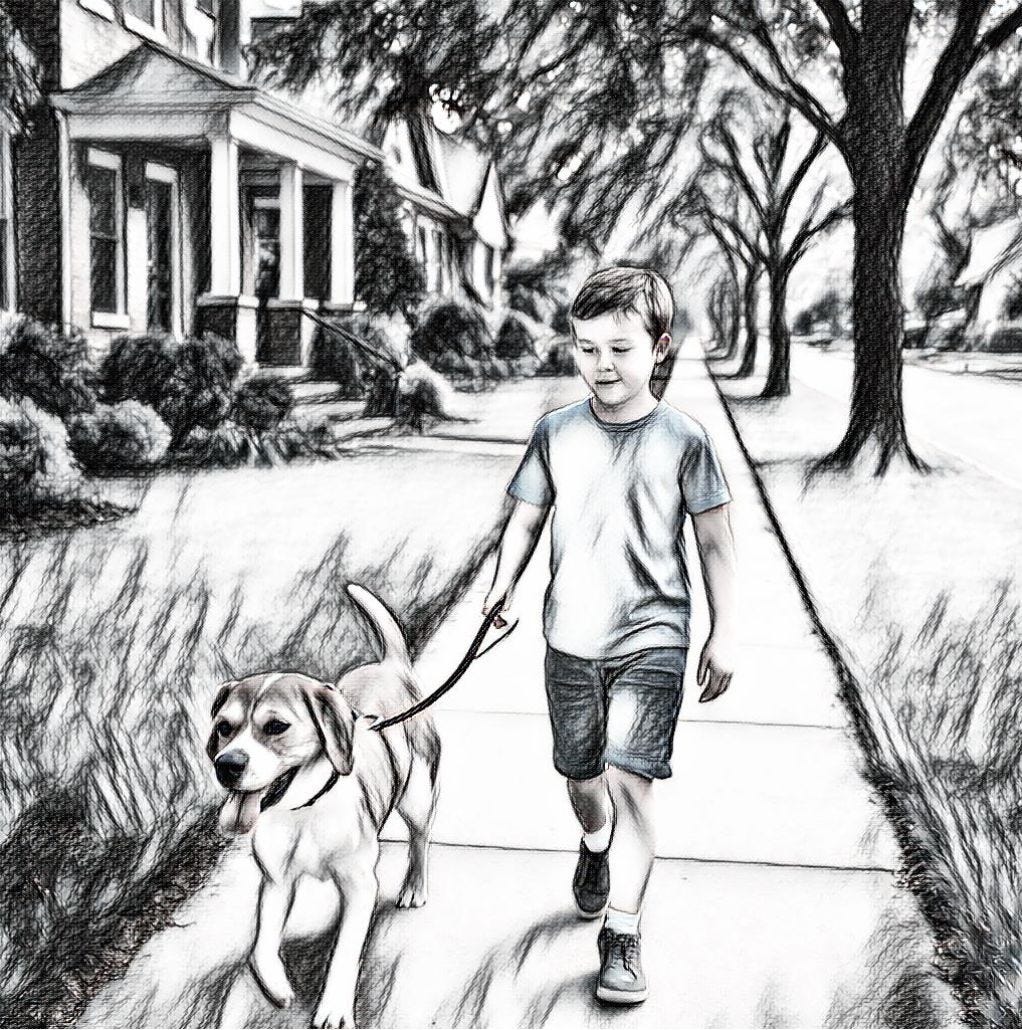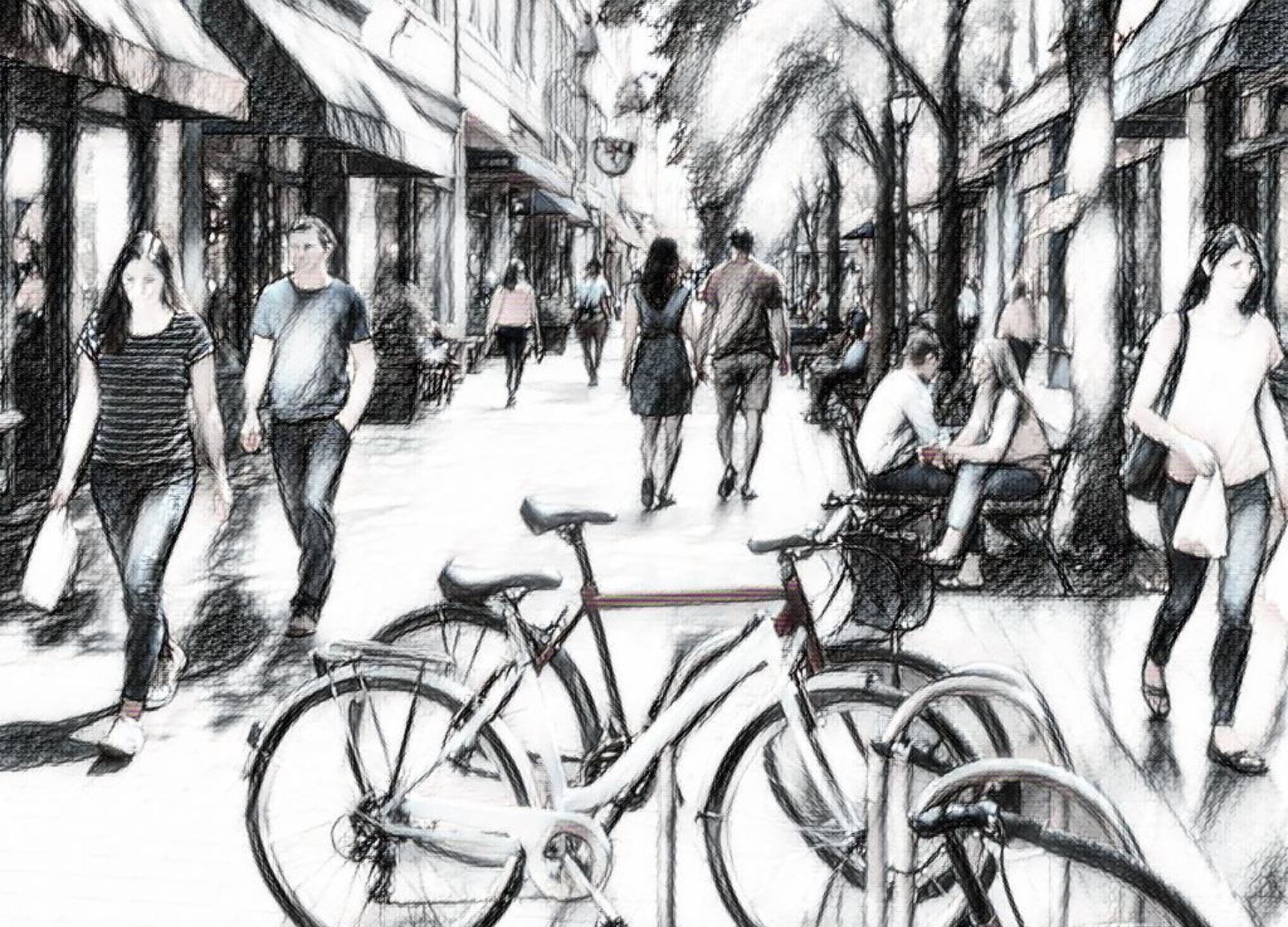Turn Parking into a Neighborhood Asset
Here's an alternative to the financial suck of "free" car storage.
Free parking is a myth that costs neighborhoods dearly. In commercial corridors, it’s a subsidy for drivers that inflates business expenses and eats up land.
Urban planning scholar Donald Shoup estimated that the hidden expenses of free parking—subsidized spaces, lost development opportunities, higher rents—total $85 billion annually across U.S. cities (check out Shoup, The High Cost of Free Parking). Sprawling parking lots gobble up space that stifles economic growth.
The ripple effects hit the surrounding residential areas. When cities do have some type of paid parking, 80% fail to reinvest the revenue locally, missing a chance to improve the areas that get the most foot, bike, bus, and car traffic.
Parking Benefit Districts (PBD) flip the script. They charge for parking in commercial corridors via meters or permits, then reinvest the revenue into a defined district that includes nearby residential streets. The funds can pay for sidewalks, lighting, bike lanes, bus shelters, street trees, public art—improvements that make neighborhoods safer and even more appealing. Unlike traditional parking systems, PBDs are hyperlocal, so the neighborhoods generating the most revenue reap the rewards.
In Old Pasadena, PBD revenue from parking meters transformed a skid row commercial district into a pedestrian haven. Over a five-year period, the 21-square-block district raised $6.4 million, and they’re consistently bringing in over a million per year. Washington, D.C.’s Golden Triangle PBD reinvests meter revenue into public spaces, serving both businesses and residents with cleaner streets and better transit access.
A 2011 study in San Francisco found that metered parking increased space turnover by 20%, bringing more customers to shops. Pedestrians, cyclists, and transit users—served by PBD-funded infrastructure like bike racks and bus stops—spend more than drivers. In Portland, Oregon, people arriving to stores on bicycles spend $100 more per month at local businesses than drivers.
Here’s how cities are setting up parking benefit districts
Market-Rate Pricing for Curb Parking
Prices are adjusted so that a small number of spaces are always available (usually aiming for 85% occupancy).
Pricing can be dynamic, varying by time of day or demand level, to reduce cruising for parking.
Revenue Stays Local
Unlike traditional parking meter revenue that disappears into a general fund, PBD revenue is ring-fenced for local improvements.
Funds typically support neighborhood priorities: sidewalk repairs, street trees, lighting, crosswalks, graffiti removal, transit passes, etc.
Community Buy-In
When residents and business owners know that meter revenue directly funds their street upgrades, they’re more likely to support parking management.
Visitors spending money in the neighborhood are also the ones funding neighborhood improvements.
Demand Management
PBDs use pricing as a way to manage limited curb space, reducing congestion and emissions caused by drivers circling for free spots.
PBDs shift the narrative from “parking meters are a tax” to “parking meters are an investment.” Rather than subsidizing car storage, cities can use parking revenue to enhance public space. Spend some time on the Parking Reform Network website. They’ve got loads of useful information and updates on cities who are reforming old car-oriented parking policies.




Where there is inadequate public transit, parking fees should be allocated to improving it so fewer people would (feel the) need to drive and park cars. Emissions reductions must be the top priority of any policies going forward; we are already way behind on an ever-accelerating schedule.
The movement to eradicate parking is being used as an ideological cudgel, without considering the consequences, in my own city, Seattle. When you have: hills, rain, and a lack of adequate public transit, added to a lack of public safety, it is not practical to expect people to take buses at night to restaurants and events. When there are nightly shootings at the entertainment districts it is counter productive to ask people to walk blocks in the dark to buses or far away lots. Restaurants and business suffers. Visiting a friend at night in the congested high density areas with the new high parking rates means spending up to $15 to park plus the cost of dinner or walking 10+ blocks on streets that are unsafe at night. We are told constantly that concern for safety is fear mongering and "Fox News" but it is a thing, and any woman who has been assaulted on the street takes it into account.
The escalating cost of the parking still allowed, the removal of street parking and lots to "force people out of their cars" has made many things in the city only accessible to the young, the hardy, and the well off who can afford Lyft or Uber. One particular street, Roosevelt, has been turned into a bike lane street with 2 one way lanes for cars. Virtually all of the street parking that used to be available is gone. The commute down that street in a car is now lighting fast: the small businesses, which needed visitors from all across the city, are gone.
Minimum wage workers and small business people who work with their hands and tools often must use a car for work. They also may have three jobs and work the night shift. Expensive or non existent street parking has a disproportionately negative effect on them. Builders can't find anywhere to put their trucks, and without safe garage parking cars tools are stolen.
I support the ideals of walkable streets and the quiet of streets without cars. When we don't look at the down-stream effects from a a wider view that takes class and equal access into account there are many losers when these policies are applied.